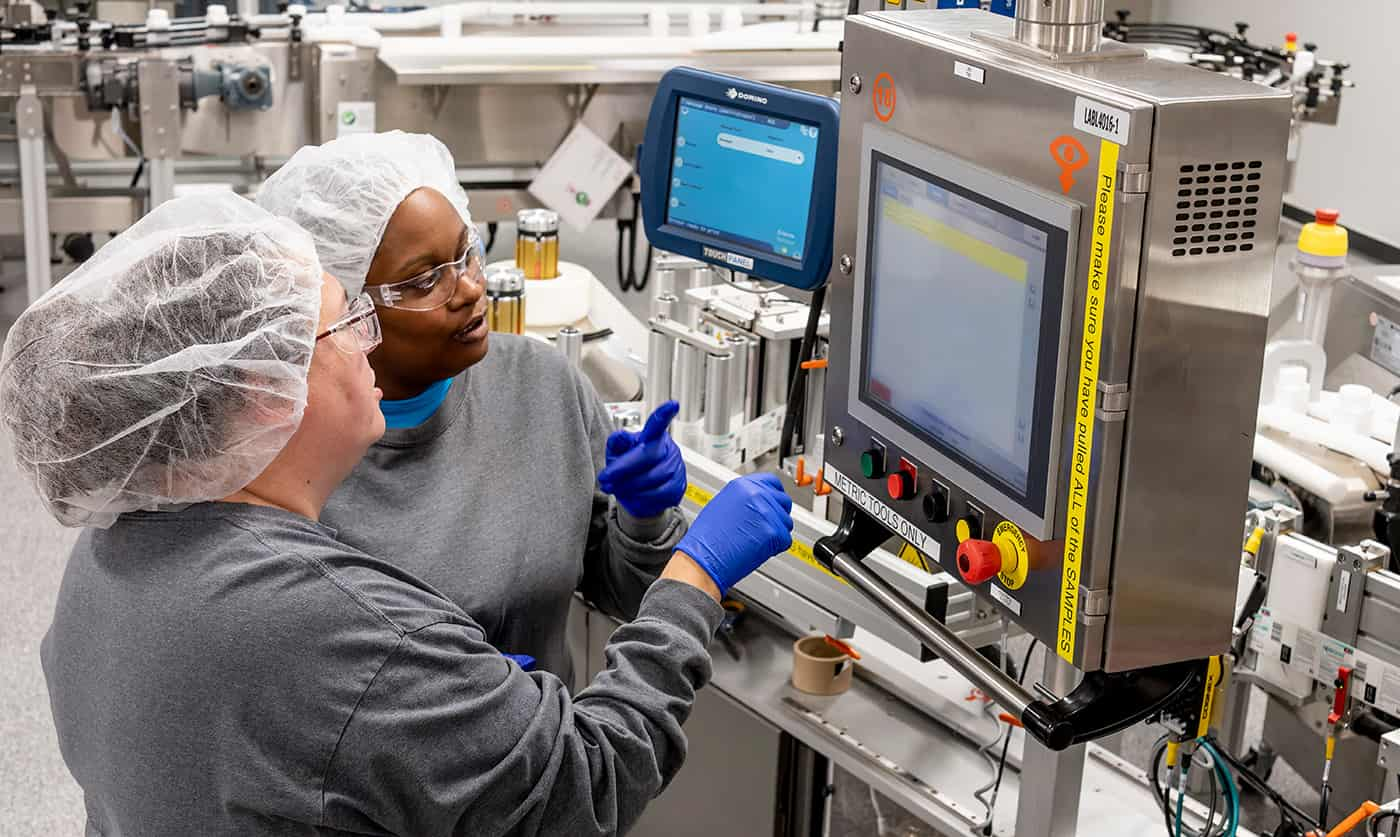
From concept to delivery
Take a ‘stroll’ through our manufacturing facility in Kalamazoo, Michigan, where Apoquel® (oclacitinib tablet) is made
This audio recording was enabled by AI
Veterinarians and pet parents around the world use Apoquel (oclacitinib tablet) to help millions of dogs1 get relief from painful, incessant itching caused by allergic dermatitis. But what happens before the product ever reaches the dog’s mouth? Take a ‘stroll’ through our manufacturing facility in Kalamazoo, Michigan, where Apoquel tablets are made—to learn how we manufacture the product and the lengths we go to ensure pets have a safe and effective treatment to put an end to all that scratching.
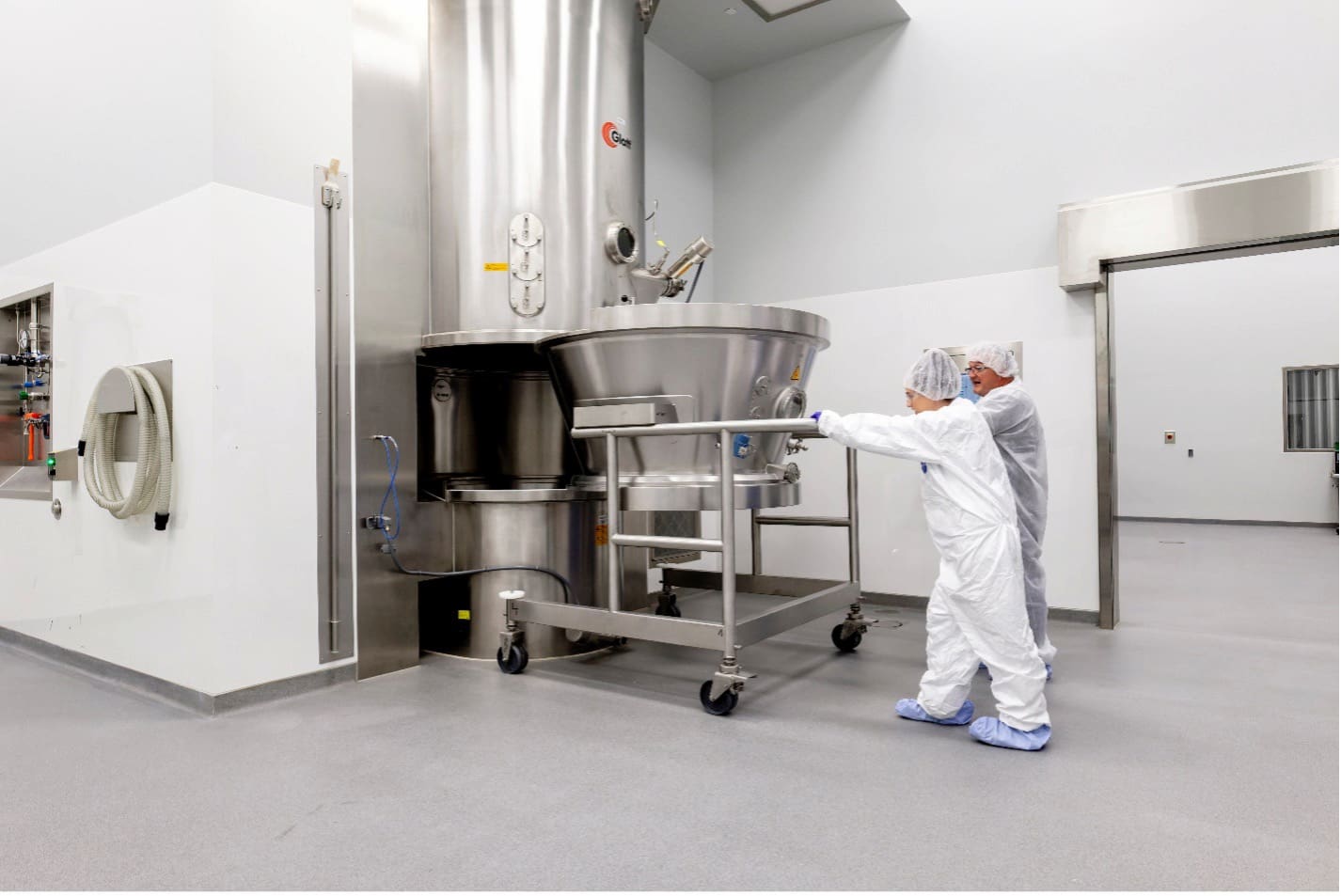
Operator colleagues use a large fluid bed to dry granulated material similar to coarse sugar before moving it to the blending stage in the Apoquel manufacturing process. The granules are created with high shear granulator equipment that follows a pre-programmed “recipe.”

A skilled operator initiates the final blend recipe in preparation for tablet compression.
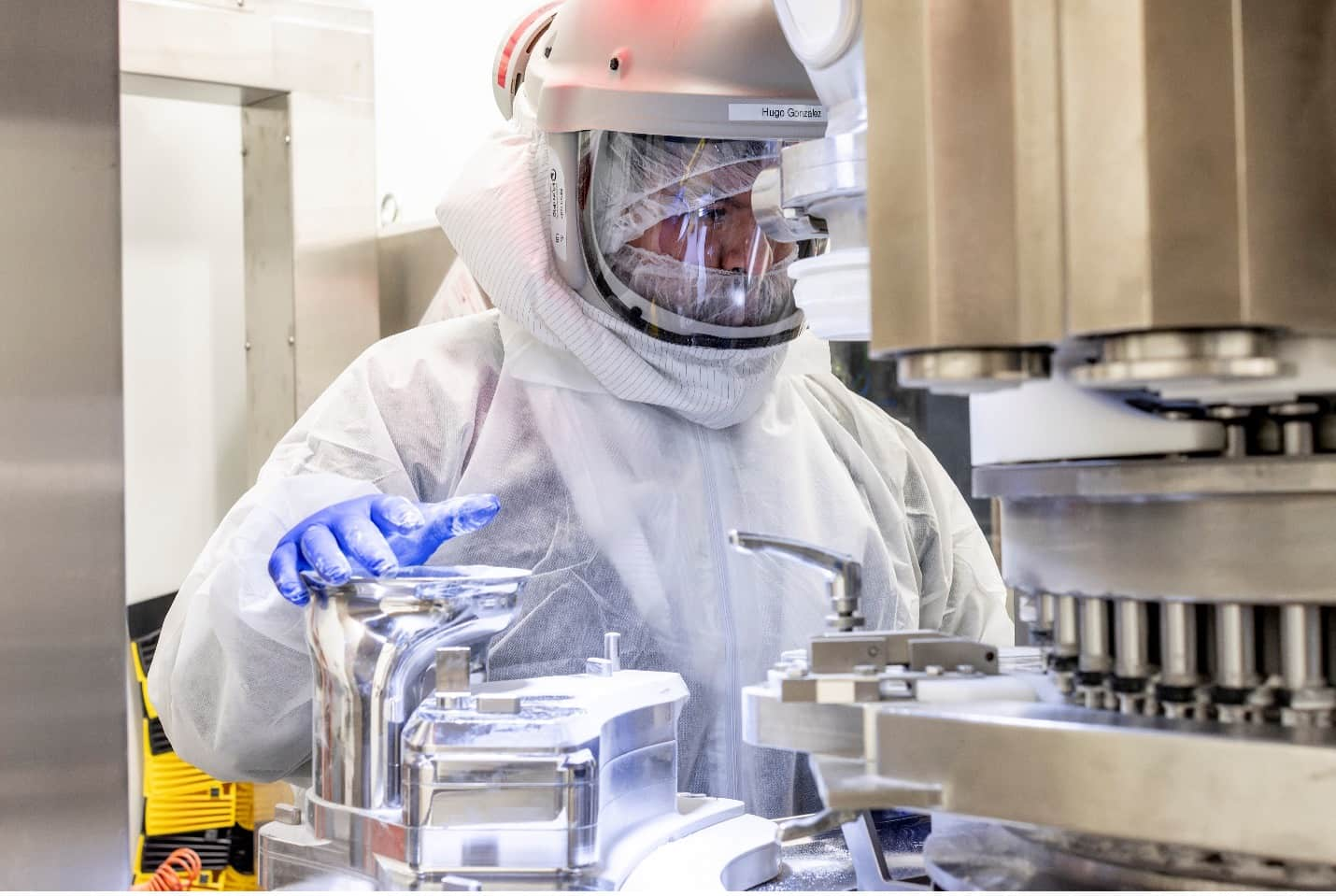
After materials are well-blended, an operator programs the tablet press to create the final product ready for packaging. The tablet press can create 5,000 Apoquel tablets every minute. Personal protective equipment is a must in our facilities to protect our colleagues and the important materials they manage every day.
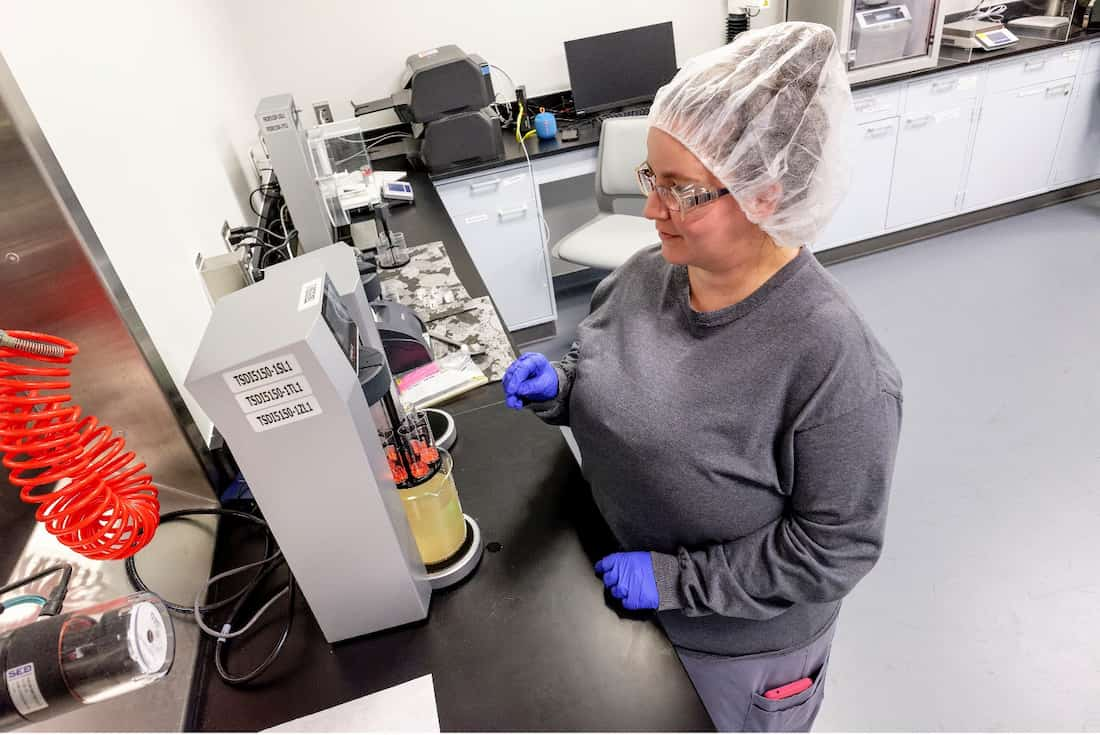
She may look like she’s making a latte, but the expert operator is actually conducting a disintegration test. This step is part of our quality assurance process and mimics the acid in a dog’s stomach to ensure the tablet does what it’s supposed to do once inside your pet.

Setting up the bottling line for Apoquel tablets means our skilled operators are nearing the finish line in this high-tech manufacturing operation. They select the exact speed and other parameters to move the tablets along conveyors that then flow into bottles.
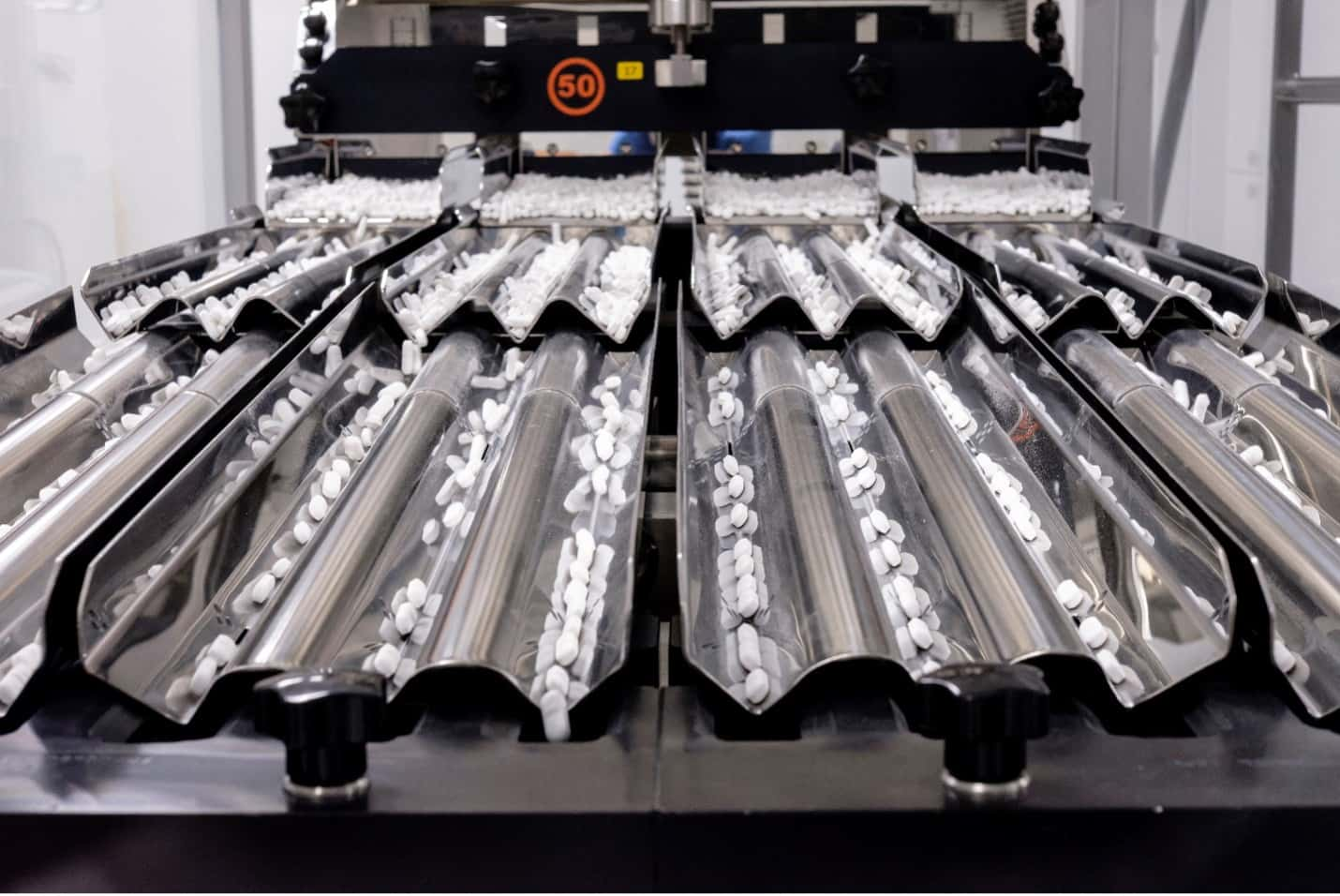
And here they come! The tablets travel up an elevator and are then tipped forward to rain down into channels. Once there, tablets gently vibrate as they move toward the bottles. A 400-kilogram batch (~880 pounds) produces around 800,000, 16-mg tablets. The bottling process for one batch takes about four hours to complete.
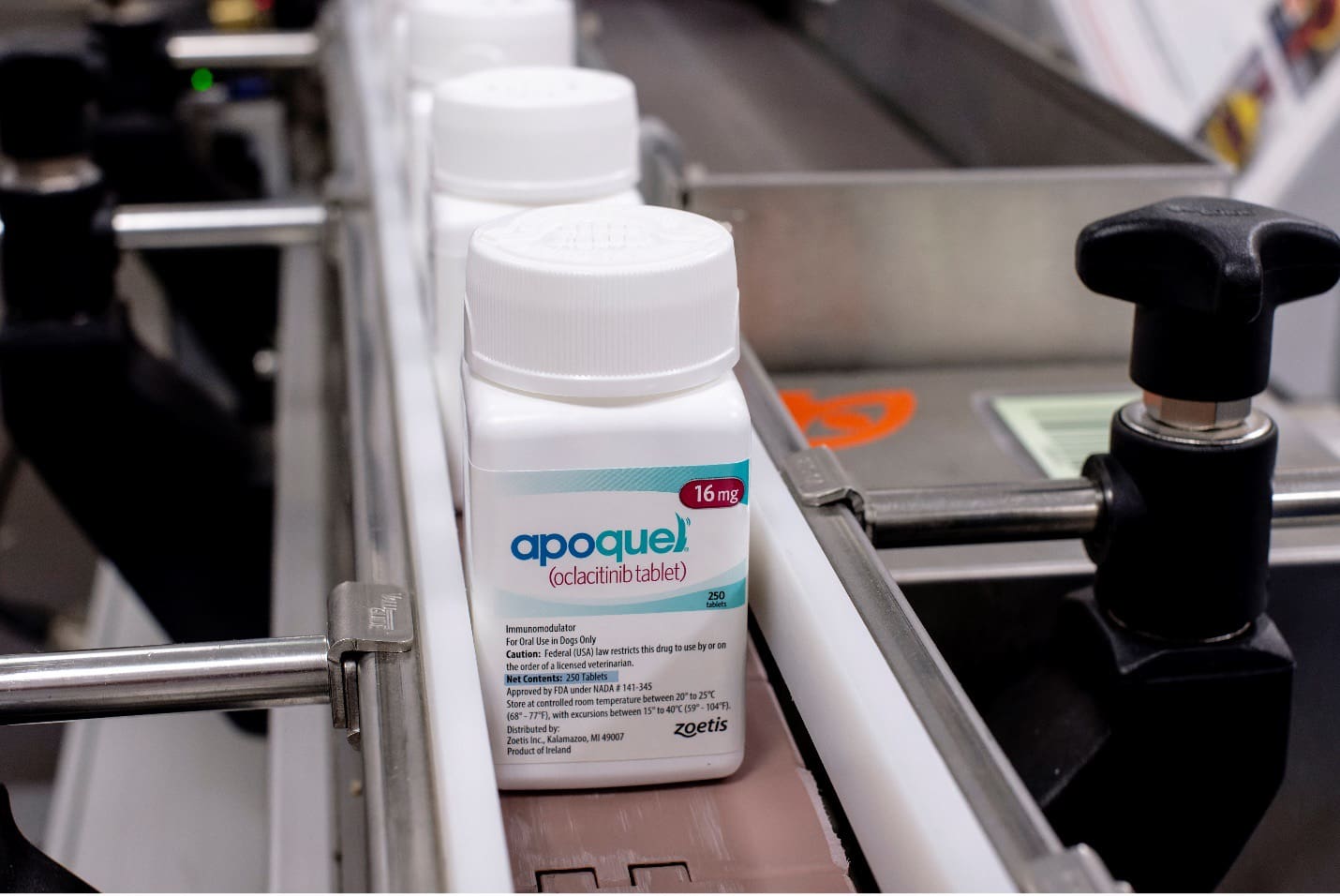
Apoquel* is helping millions of dogs1 in more than 90 countries get relief from itchy skin due to allergic dermatitis. Apoquel works by blocking Janus kinase enzymes, troublesome signals that our scientists know cause a dog’s skin to itch and become inflamed2.
Updated on August 21, 2025
INDICATIONS: Control of pruritus associated with allergic dermatitis and control of atopic dermatitis in dogs at least 12 months of age.
IMPORTANT SAFETY INFORMATION: Do not use Apoquel in dogs less than 12 months of age or those with serious infections. Apoquel may increase the chances of developing serious infections, and may cause existing parasitic skin infestations or pre-existing cancers to get worse. Consider the risks and benefits of treatment in dogs with a history of recurrence of these conditions. New neoplastic conditions (benign and malignant) were observed in clinical studies and post-approval. Apoquel has not been tested in dogs receiving some medications including some commonly used to treat skin conditions such as corticosteroids and cyclosporines. Do not use in breeding, pregnant, or lactating dogs. Most common side effects are vomiting and diarrhea. Apoquel has been used safely with many common medications including parasiticides, antibiotics and vaccines. See full Prescribing Information at Apoquelpi.com.
All trademarks are the property of Zoetis Services LLC or a related company or a licensor unless otherwise noted. © 2025 Zoetis Services LLC. All rights reserved. APQ-01682R1
References
*Apoquel tablet launched Jan 2014, Apoquel Chewable launched October 2023.
1 Kynetec PetTrak – GAH-284: Unique Patient Count Since Launch Custom Report: Apoquel-Cytopoint January 2014 – March 2025.
2 Gonzales AJ, Bowman JW, Fici G, et al. Oclacitinib (APOQUEL®) is a novel Janus kinase inhibitor with activity against cytokines involved in allergy. J Vet Pharmacol Ther. 2014;37(4):317-324.